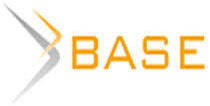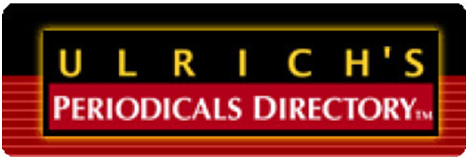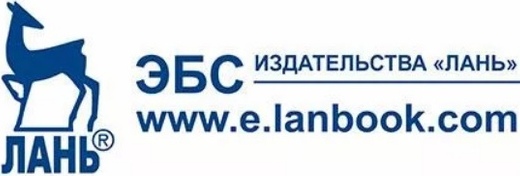ТЕХНОЛОГИИ ДОПОЛНЕННОЙ РЕАЛЬНОСТИ В ТУРИЗМЕ
Aннотация
К сожалению, текст статьи доступен только на Английском
Introduction. The modern world of high technology not only makes people constantly update their skills throughout their lives but also opens up more and more prospects for further development of society. All this leads to the fact that there are new directions in all areas of human employment. In our time, not only virtual reality has become available, where people can hone their skills without affecting the real world, have fun, learn, but also augmented reality. The main advantage of augmented reality is that it does not tear a person away from the real world, but complements it with necessary information. The simplest example of its work can be explained as a head-up display in cars (Pic. 1. (Quto, 2018)). In this case, in order to find out the speed, the next road maneuver, and the location you do not need to be distracted from the road by the speedometer and the navigation screen, all the necessary information complements the view through the windshield.
In the same way, it is possible to supplement the entire surrounding world with necessary information through special devices, such as augmented reality glasses, as well as through smart phones and tablets with a camera.
Thus, the aims of the work are: first, to review the benefits of AR-technology in the sphere of tourism; second, to distinguish basic advantages of AR-technologies, that at the same time are in demand in different fields like education, museum business and construction; and finally, to represent the results of comparison of realities (real, virtual and augmented) bridging the gaps to help improve the quality in the tourism industry.
Materials and Methods. Technology is still in the focus of many researchers and business since its advantages and drawbacks have been changing through time. After years of improvements, augmented reality is already revolutionizing the published materials today. Nowadays, readers of popular magazines can see additional multimedia content by pointing their gadgets towards special markers on certain pages like it is presented in Pic.2 (Buhalis D., Yovcheva, Z., 2014).
This new breed of next-gen advertisements can be applied to any kind of paper-based promotion materials. Touristic infrastructure elements like hotels, any kind of entertaining activities that will take place or amusement spaces or even roller-coaster trips virtually could be shown moving to make a greater impression for possible tourists, insisting to spend money on. Thus, AR-technologies can be a very powerful and profitable weapon for market services to success – a feature that is still underestimated in the tourism and hospitality industry market (Buhalis D., Yovcheva, Z., 2014).
Besides, AR-technologies are ideal tools that can help tourists not to be lost in new environments. It is a matter of fact that navigation was the original field for augmented reality to implement; naturally, it was invented to substitute a map and the compass. Augmented displays are meant for helping in wayfinding both for pedestrians and drivers reducing the extra mental effort in navigation.
Moreover, augmented reality can show either directional arrows or even virtual paths to make indoor and outdoor navigation easier and clearer. Amongst the plenty of AR-applications, we can find AR-browsers, their examples are shown in Pic.3 (Konovalova E., 2015), they have the biggest popularity and highest value today. These apps are designed to be user-friendly and have all the necessary tourism-related options. «An AR-browser suited for the needs of tourism enriches the real-world with interactive virtual information that allows visitors to unfamiliar locations to identify the most important and exciting points of interest and learn more about their surroundings» as was written by Dimitrios Buhalis and Zornitza Yovcheva in their report (Buhalis D., Yovcheva, Z., 2014).
Furthermore, there are some applications like KabaQ (Pic.4. (AR-critic, 2018)), a free augmented reality app that creates virtual food displays consisting of multiple digital renderings and actual photographs, a unique method of photogrammetry used exclusively by the organization.
By capturing images of the food from various angles, stitching them together to form complete 3D-models, and placing them in a new augmented reality menu, food distributors are able to provide patrons, both in-house and online, with detailed digital renditions of available meals they can use a preview before selecting. All model dimensions are identical to the food they represent, displaying an accurate representation of both appearance and portion.
Unfortunately, navigation and exploration of unknown environments can be complicated a lot by the language barrier, for example, when some important information is given on street signs or instructions on billboards that tourists are unable to translate.
Apart from examples given above, AR-translator apps can immediately translate a text like train schedules when tourists are at a train station, a wide variety of dishes in restaurant menus from a foreign to the native for the user language like in Pic.5. (Uncubed, 2018). Thus, we have introduced some of the examples of how tourists can benefit from AR-technology.
On the other hand, there are touristic businesses that can reconsider their concern and keep up with Hi-Tech. AR-technology (Buhalis D., Yovcheva, Z., 2014) provides an overwhelming educational experience. What is more, education has lots of benefits from augmented reality because this technology gives opportunities for users to add motor activities to mental ones through interaction with new content through a tangible intuitive interface.
Educationally rich visits (Buhalis D., Yovcheva, Z., 2014) and visitor engagement is also one of the most important factors in the tourism industry and AR has huge potential to actively involve tourists in learning about. Pic. 6 (Radsky A., 2015) shows just a simple example of this interaction and experiencing various museum settings and artifacts like never before. Most recently, interactive digital storytelling techniques have been applied to museum settings to increase their educational potential.
For example, the Digital Binocular Station (Pic.7. DBS, (Mindspace solution, 2009)) makes the static parts of a museum environment come to life, turning a boring museum tour into a thrilling, dynamic and more informative memorable adventure that increases visitor retention time and revisits.
Similar to that AR-games were invented to turn real-world locations into an immersive game by adding virtual purpose to move around this location. Considering the flexibility and high customization of virtual information, different scenarios can also be applied to the tourism domain. As a matter of fact, location-based AR games have already proven motivating and engaging for tourists. One interesting example is TimeWarp as seen in Pic.8. (Buhalis D., Yovcheva, Z., 2014).
This outdoor game with augmented reality gives the opportunity for players to experience different events for past, present, and future “jumping” through time portals in this game play just walking around the city of Cologne in Germany with a gadget. The main aim of TimeWarp was to gain touristic interest in interaction with the city and to see it changing. User opinion survey showed that tourists liked this game and described the new experience as fun, new and realistic (Buhalis D., Yovcheva, Z., 2014).
Finally, a re-creation of ancient temples and historic buildings is a topic that lends itself naturally to AR with a number of developed prototypical and commercial systems (Buhalis D., Yovcheva, Z., 2014). The first cultural heritage site that benefited from an augmented virtual reconstruction of an ancient temple was Olympia in Greece, where researchers developed the ArcheoGuide AR system. In the same way now, cities can be developed by AR-technologies that will help managers and city planners to see a future aesthetic look of an exact place when it should be transformed. On-the-spot comparison is now available to make the best decision of transformation. This is a more effective way to visualize location development than abstracted schemed and generalized plans like it was before. The use of AR to superimpose virtual 3D models of planned innovations on top of the actual environment where they will be introduced can support effectively both individual and collective, as well as private and participatory, decision-making processes.
In 2011, the Netherlands Architecture Institute launched Urban Augmented Reality application screenshots which are seen in Pic.9 (Buhalis D., Yovcheva, Z., 2014). This app is available in 8 cities in the Netherlands and gives an opportunity to residents and tourists to see the past, alternative present and future look of each urban environment. And what is more important, it allows users to add comments to a database, thereby effectively soliciting public opinion. This approach can be very useful in a wide variety of implementation in constructing not only a house but even developing the touristic sphere by choosing the most important elements of touristic infrastructure in their best locations having both residents and tourists’ opinions.
Results and Discussion
We have overviewed the most important fields of implementation for AR-technologies in touristic and hospitality industry spheres. This technology is still underutilized in tourism due to its newness, underestimation and technical resourcefulness. Nowadays, augmented reality is developing and we are sure that sometime later it will become a must-have in tourism and business because of it's high visibility. To sum up, we should highlight the pros and cons of AR-technologies for tourism. First of all, it makes the travel experience easier with interactive screens with additional information. Secondly, a tourist needs to be in a certain location to use this technology, so it attracts more people to this destination. Thirdly, it helps to reconstruct ancient temples, historic buildings, and even activities as they were back in the days, so all the tourist needs is a gadget to see it. Fourthly, it helps to compare old architecture as it were and futuristic as it can be in plans for some years later.
Nevertheless, it has some disadvantages like high costs for the development of such applications. Also, mostly all of the time tourists have to be online to download new information when they are changing the view. And all of these applications are very heavy for your device’s hardware that affects battery life badly.
Overcoming these disadvantages will foster quality improvements in the tourism industry due to AR-technologies have some benefits as shown in Fig.10.
This chart (Fig.10.) shows that augmented reality took all the best from the real world and virtual reality in tourism. That proves that travelling can develop with the help of augmented reality in the modern era of high technology adding more vital information into the real world and avoid much harm applied to it but with increased playability of the environment. Besides, it helps to cut costs and to redirect money flow to a more efficient way as a strong instrument of planning.
Conclusion
Thus, augmented reality will make travelling on your own easier because all the necessary information is in your palm in an understandable view. For travel businesses it opens new ways to attract new customers and, what is more important, increase the number of revisits for new entertaining aims. We believe that AR-technologies are here to improve the travel experience from now on.


























Список литературы
Список использованной литературы появится позже.